The Best Beef Bone Broth Recipe
Nourishing bone broth, specifically beef bone broth, has been around for centuries as a result of the nose-to-tail eating model. It is packed full of nutrients, rich in flavor, and works great in many recipes.
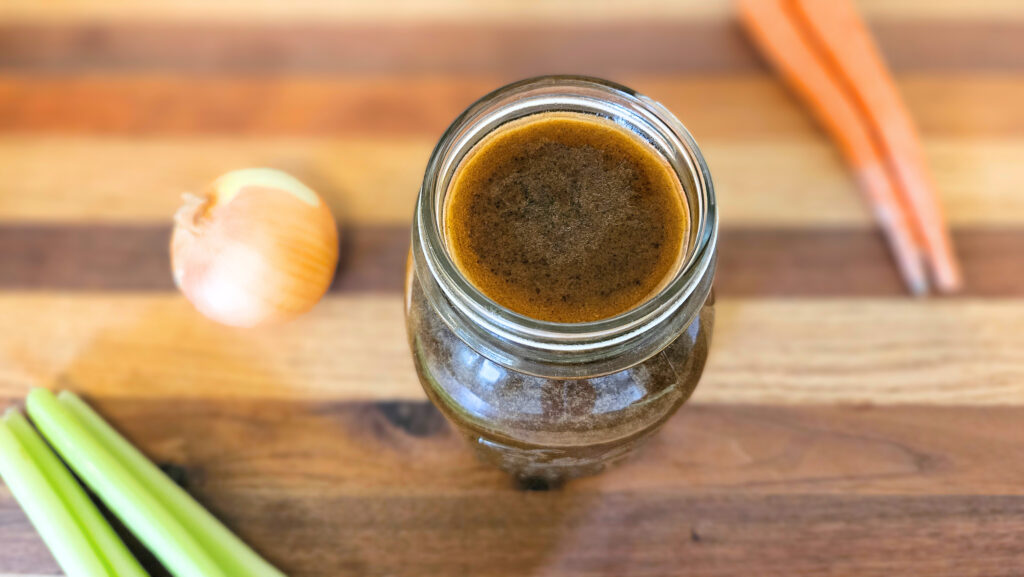
This post may contain affiliate links. Please see our site disclosure for more information.
I started making bone broth at home several years ago when I bought the book Nourishing Traditions by Sally Fallon. It was the first cookbook that I owned that wasn’t just a compilation of recipes, but it was educational as well.
I learned so many things that were new to me in the world of following an ancestral diet. I learned about the benefits of raw milk, I acquired the skill of making my own milk kefir, I read about why butter made from raw cream was superior, and I discovered why people have been consuming bone broth for generations.
Another great book which goes into even more detail on homemade broth is:
Since then, I have been regularly making both chicken and beef bone broth in my home. I love drinking them both plain as a warming drink in the cooler weather months. I also love cooking with them in my favorite recipes.
Even though I try to purchase the best store-bought version of anything, the best store-bought version of beef bone broth definitely does not compare to the homemade version.
Follow along as I show you an easy way to make your own homemade beef bone broth.
What is Beef Bone Broth?
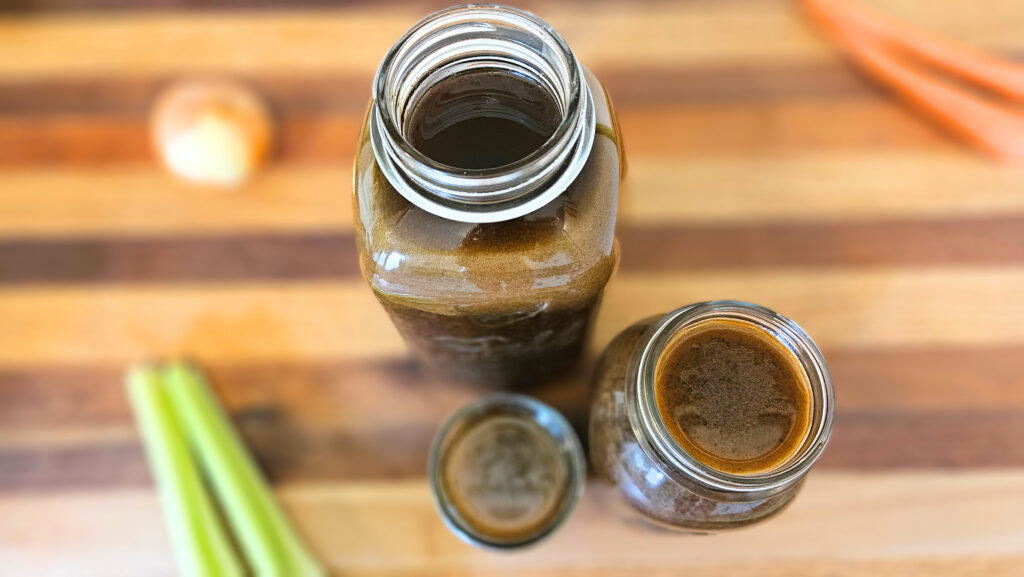
Beef bone broth is a broth made by simmering beef bones and connective tissues in filtered water along with vegetables, herbs, vinegar, and spices.
It differs from regular beef broth in that it is cooked significantly longer. While beef broth can be made in just a few hours, beef bone broth simmers for at least 24 hours. While I cook my chicken bone broth for 24 hours, I choose to simmer my beef bone broth for 48 hours instead. (See FAQs for cooking time explanation.)
Even though it sounds like it takes forever to make this recipe, the vast majority of the time is 100% hands off.
What are the Benefits of Beef Bone Broth?
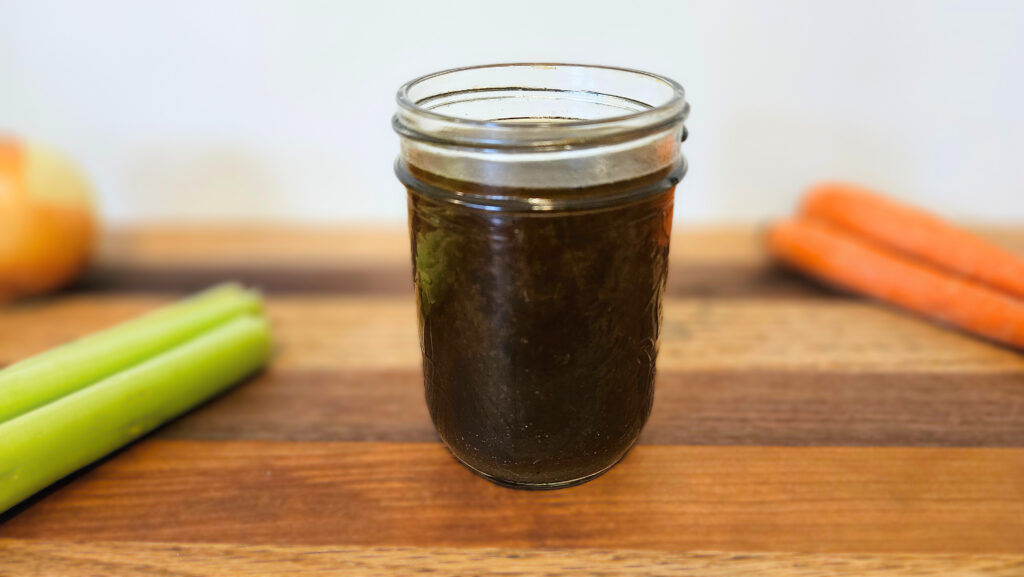
The benefit of the long, slow simmer required for making beef bone broth is a nutrient-dense broth filled with vitamins, minerals, electrolytes, protein, collagen, and amino acids. Let’s get into some of the details. (source)
Nutrition
- Vitamins– calcium, magnesium, phosphorus
- Collagen– turning into gelatin when cooked, it provides the body with amino acids, which are the building blocks for proteins
- Bone Marrow– iron, zinc, selenium, vitamin A, vitamin K, manganese, and fatty acids
Joint Protection
- Cartilage in joints tends to wear down over time, which can stress joints. Laboratory and animal studies suggest that gelatin supplementation can increase the amount of collagen in tissues, which can in turn protect joints from stress.
Osteoarthritis
- Collagen may improve osteoarthritis symptoms in the knee joint such as pain, stiffness, and poor physical function.
Inflammation and Gut Health
- Anti-inflammatory amino acids may help people with inflammatory bowel disease, since people with this condition tend to have lower levels of some amino acids.
- The amino acid glutamine may help heal the intestinal barrier in both humans and animals. Improving the intestinal barrier may help with conditions such as leaky gut, which interferes with the body’s ability to properly digest food.
Sleep
- Glycine, an amino acid found in bone broth, may improve sleep.
Weight Loss
- Due to the high protein content of bone broth, the body may feel fuller longer, leading to greater satisfaction with a meal.
Where to Find High-Quality Beef Bones?
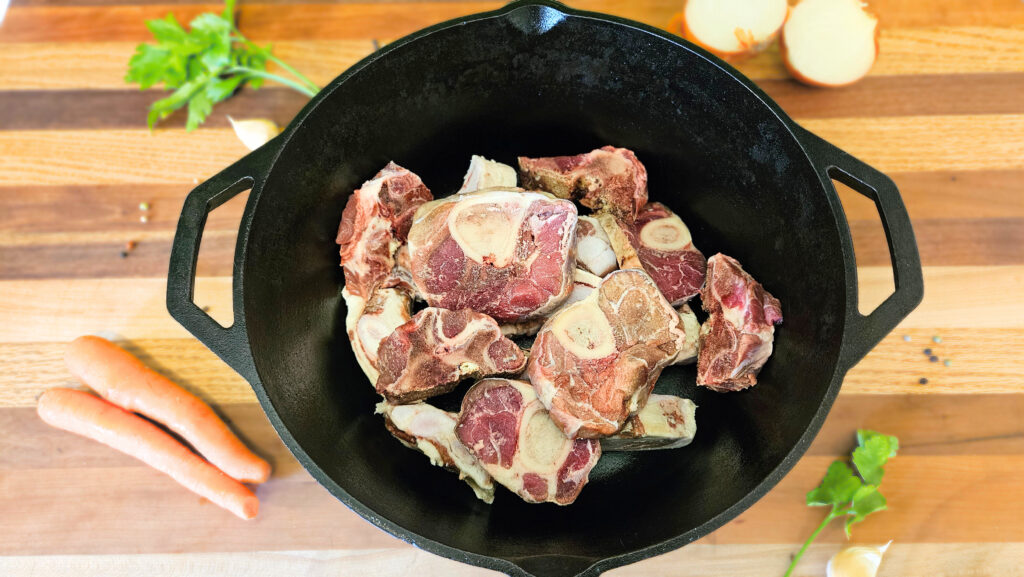
I am currently still working through frozen packs of beef bones that I requested the last time my husband and I had one of our cows butchered. However, we have since sold those cows. While I am glad I haven’t run out of those bones yet, I have to start thinking about where to find more beef bones.
Here are some ways to source high-quality beef bones.
Local Butcher
The last time my husband and I had a cow butchered, I requested EVERYTHING. I was able to specify which cuts of meat I wanted, and I was able to request all the “extra” things you rarely ever see in a grocery store. I requested the liver, heart, kidneys, tongue, fat, oxtail, neck bones, marrow bones, and soup bones.
You may be making a weird face at the moment, but trust me, it is worth it!
The bones are being used to make super nutritious and delicious bone broth. The fat was rendered down into tallow. The liver, heart, and kidneys were ground up and “hidden” into several different ground beef recipes. I have yet to use the tongue or oxtail, but those will be utilized next!
I have not tried this yet, but I have heard that you can contact local butchers and purchase these “extra” items, especially since most people don’t request them. This reduces so much food waste and increases nutrition in our daily diets.
Grocery Stores
Finding beef bones in a grocery store will vary widely depending on where you live. Additionally, the quality may not be the best. The best quality beef bones come from cows that were both grass-fed and grass-finished from pastures free of chemicals. However, if you can find top notch beef bones in your local grocery store, that is excellent!
Online Retailers
You can find almost anything on the internet these days, and in this case, I am glad! If grocery stores and local butchers are not in the cards for you, there are plenty of online retailers that ship across the country, enabling greater access to real food.
Here are just a few of the options for sourcing beef bones:
Each source will vary with pricing and where they ship to, but I hope this is a varied selection that allows everyone to find something!
Online Directories
There are additional resources, such as online directories, which can help guide you in the right direction to finding high-quality beef bones.
How to Make Beef Bone Broth
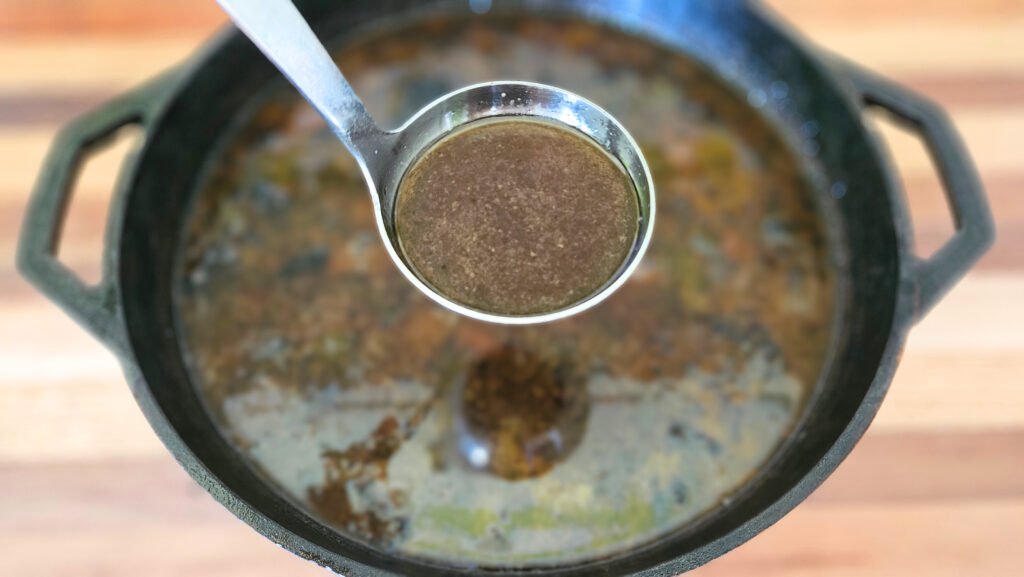
Ingredients
- 3-4lbs beef bones
- 3 carrots
- 5 celery stalks
- 1 onion
- 8oz sliced mushrooms
- 2 whole garlic cloves
- ¼ C apple cider vinegar
- 1 tbsp tomato paste
- 1 tsp salt
- 1 tsp peppercorns
- 2 bay leaves
- 0.75oz fresh parsley
- Onion and garlic skins (optional)
- 14 C filtered water
Equipment
- Large cast iron dutch oven OR large stockpot
- Rimmed baking sheet
- Fine mesh strainer
- Bowl
- Quart size mason jars
Instructions
TIP: Unlike making bone broth from chicken, most people usually either blanch and/or roast their raw beef bones prior to making the bone broth. Blanching is recommended to remove impurities and roasting is recommended to enhance the flavor. I have tried this recipe with raw beef bones, roasted beef bones, and blanched and roasted beef bones. Honestly, I have not noticed any major difference in the final product, but I do tend to roast the bones beforehand. Therefore, I recommend trying it different ways to see what you like best. For this recipe, I’ll go through the instructions as if you are both blanching and roasting.
Tap/click the images for a description of each step ⬇️
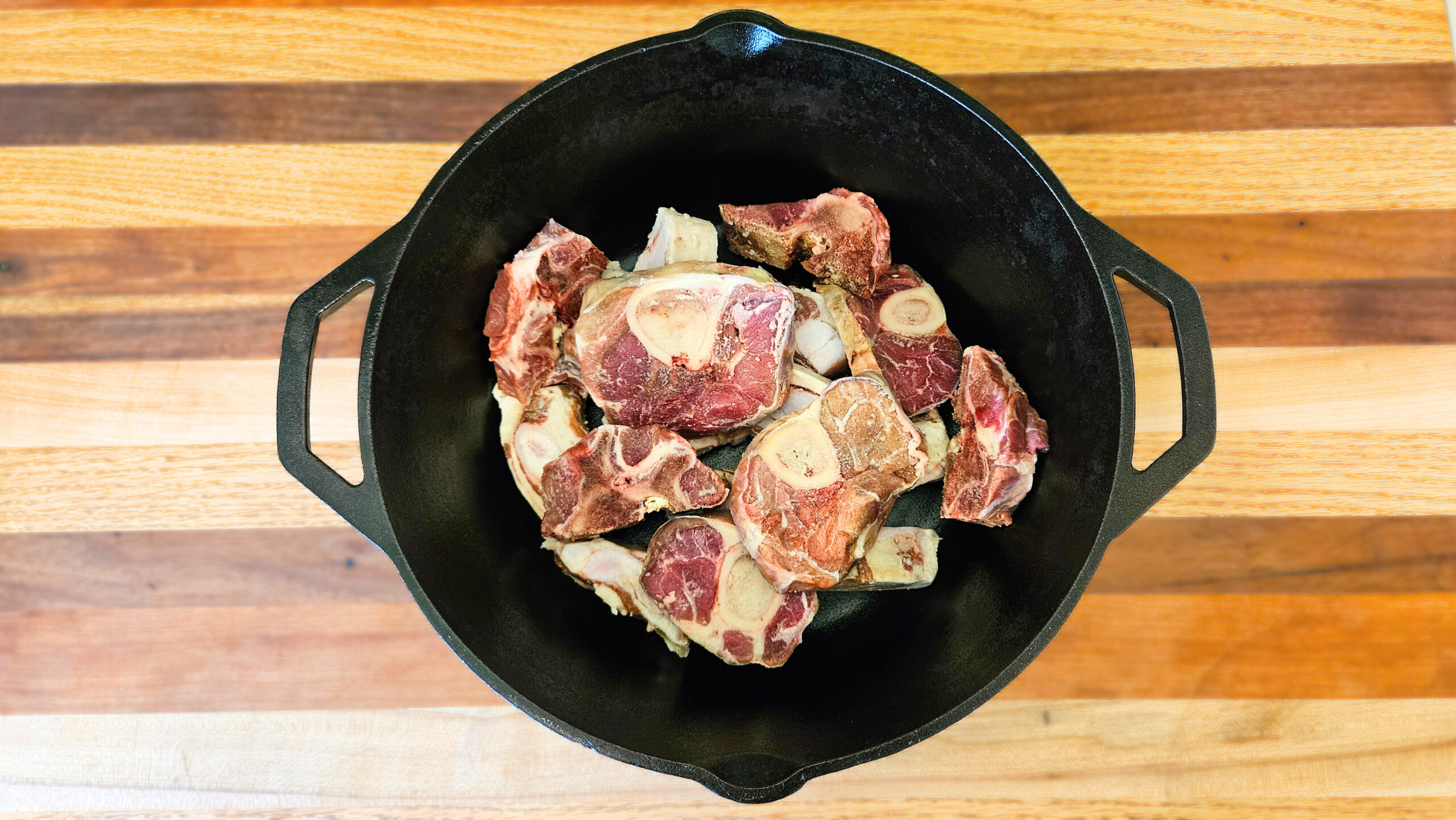
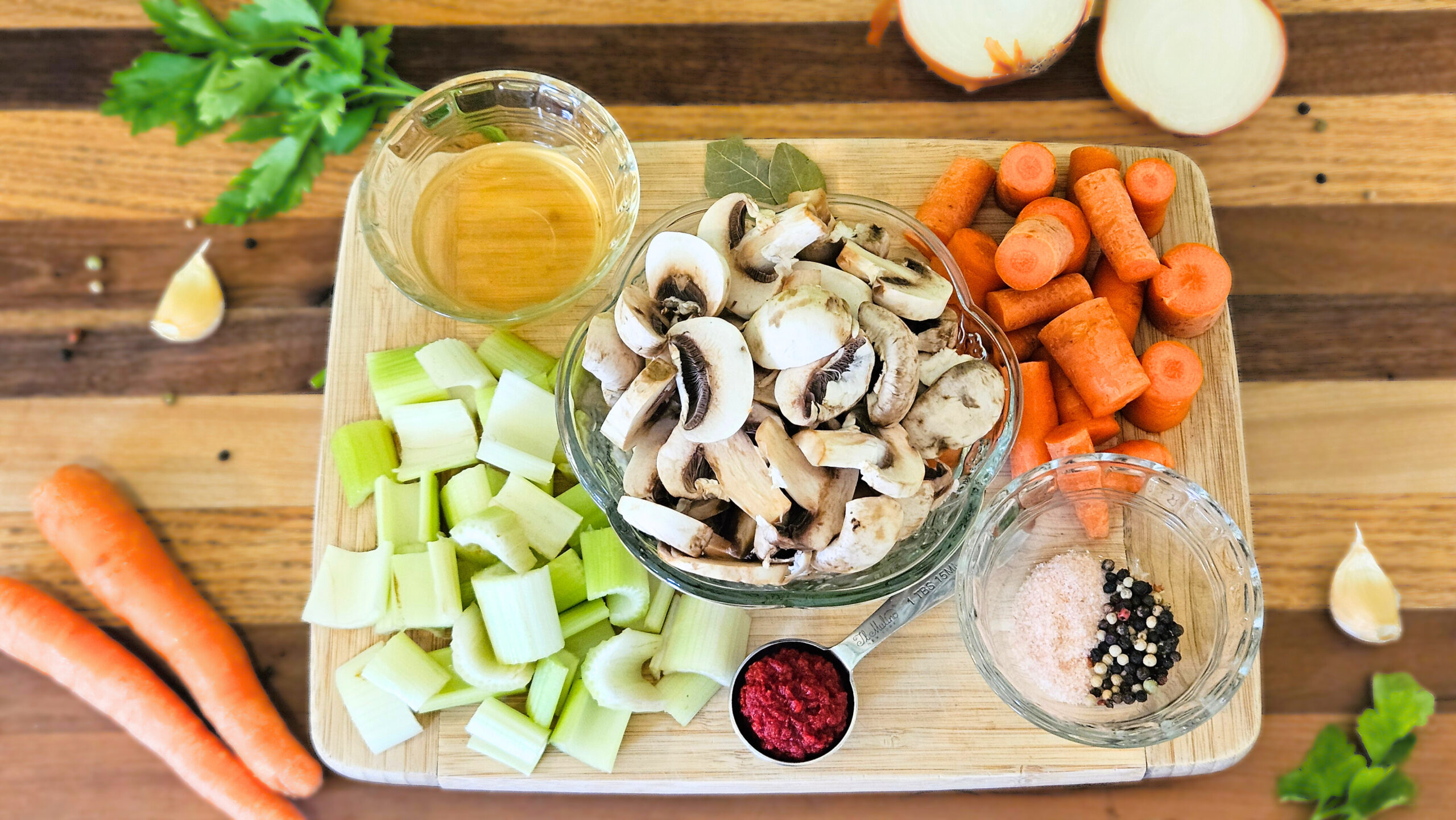
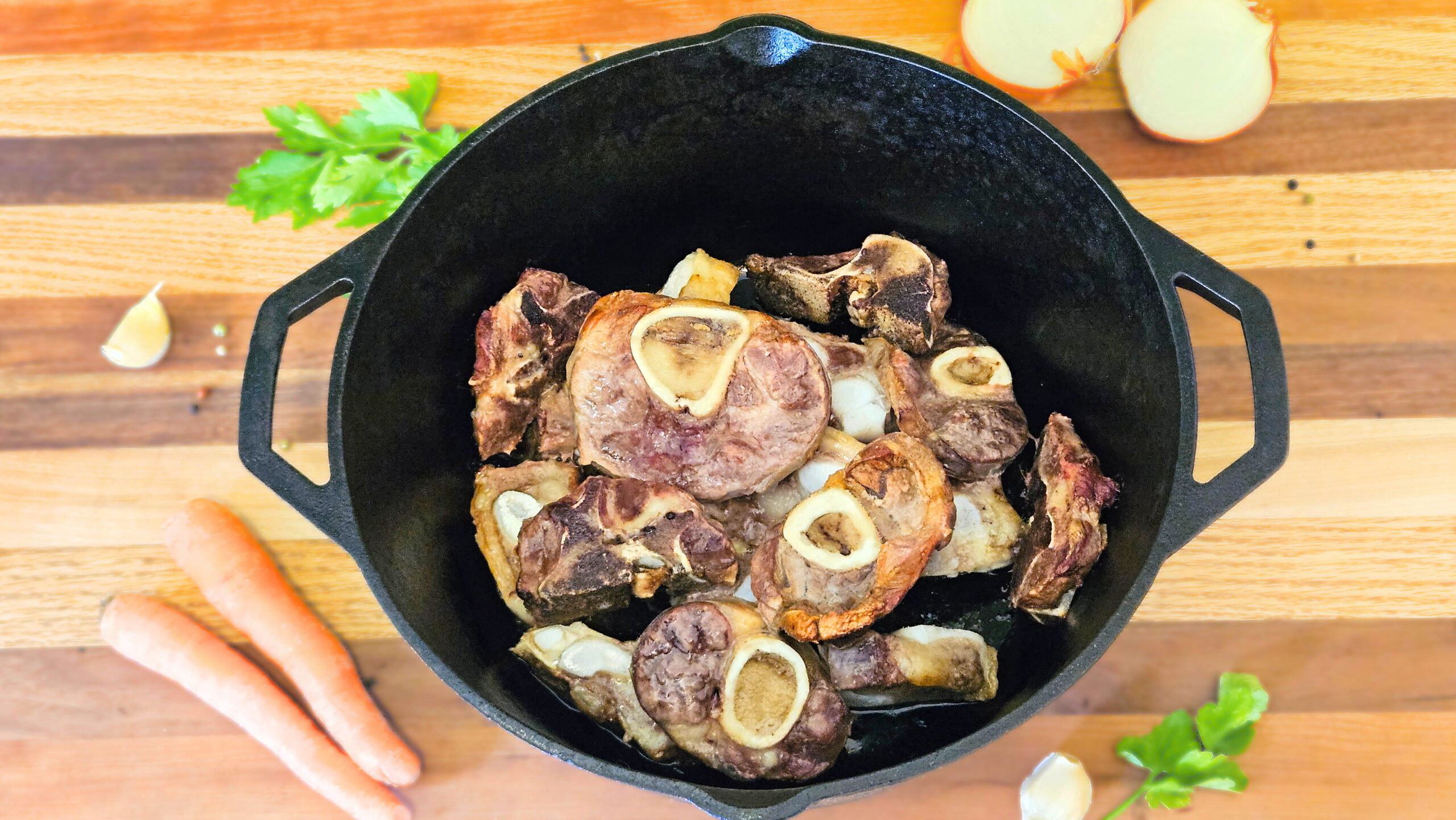
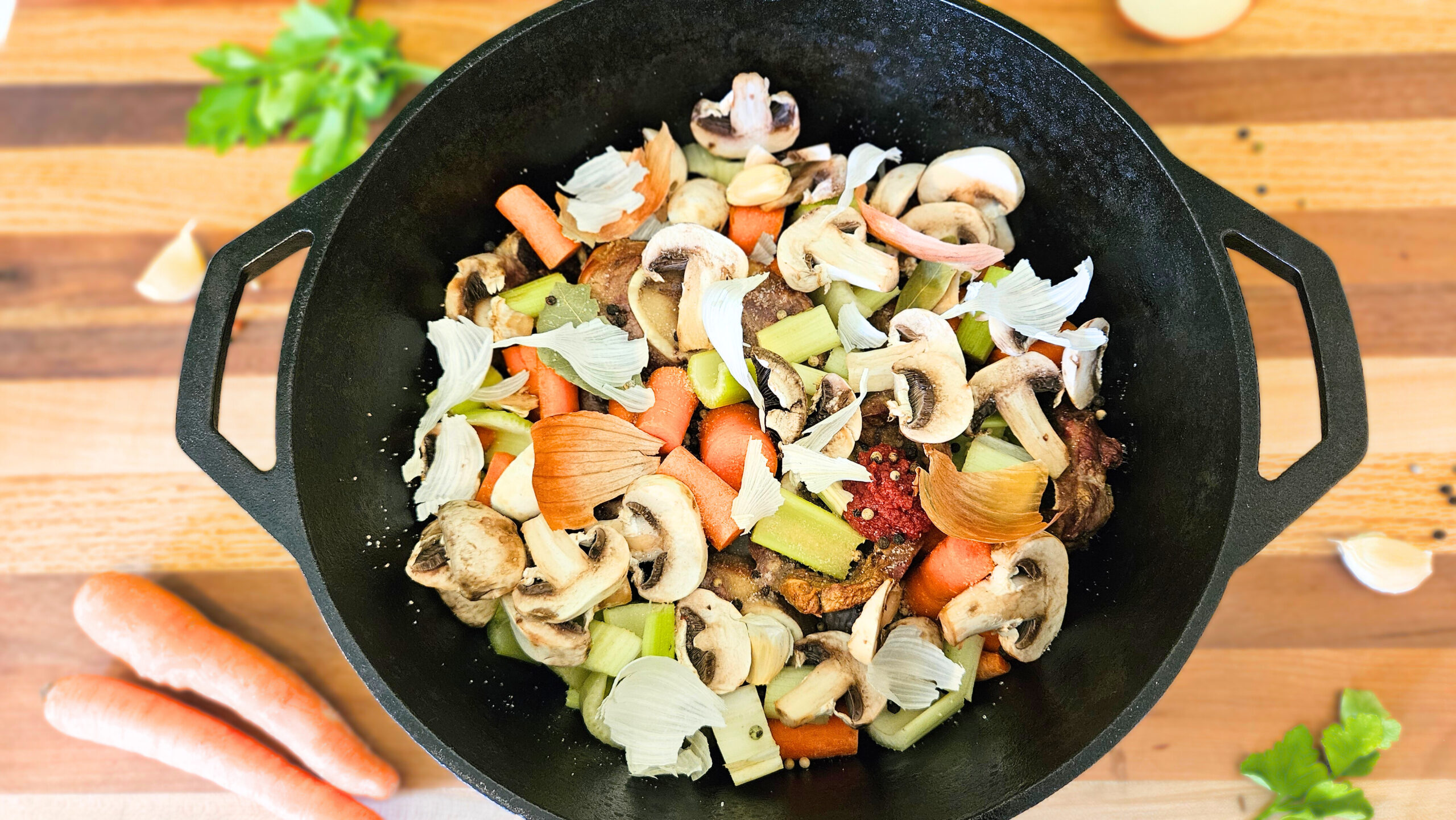
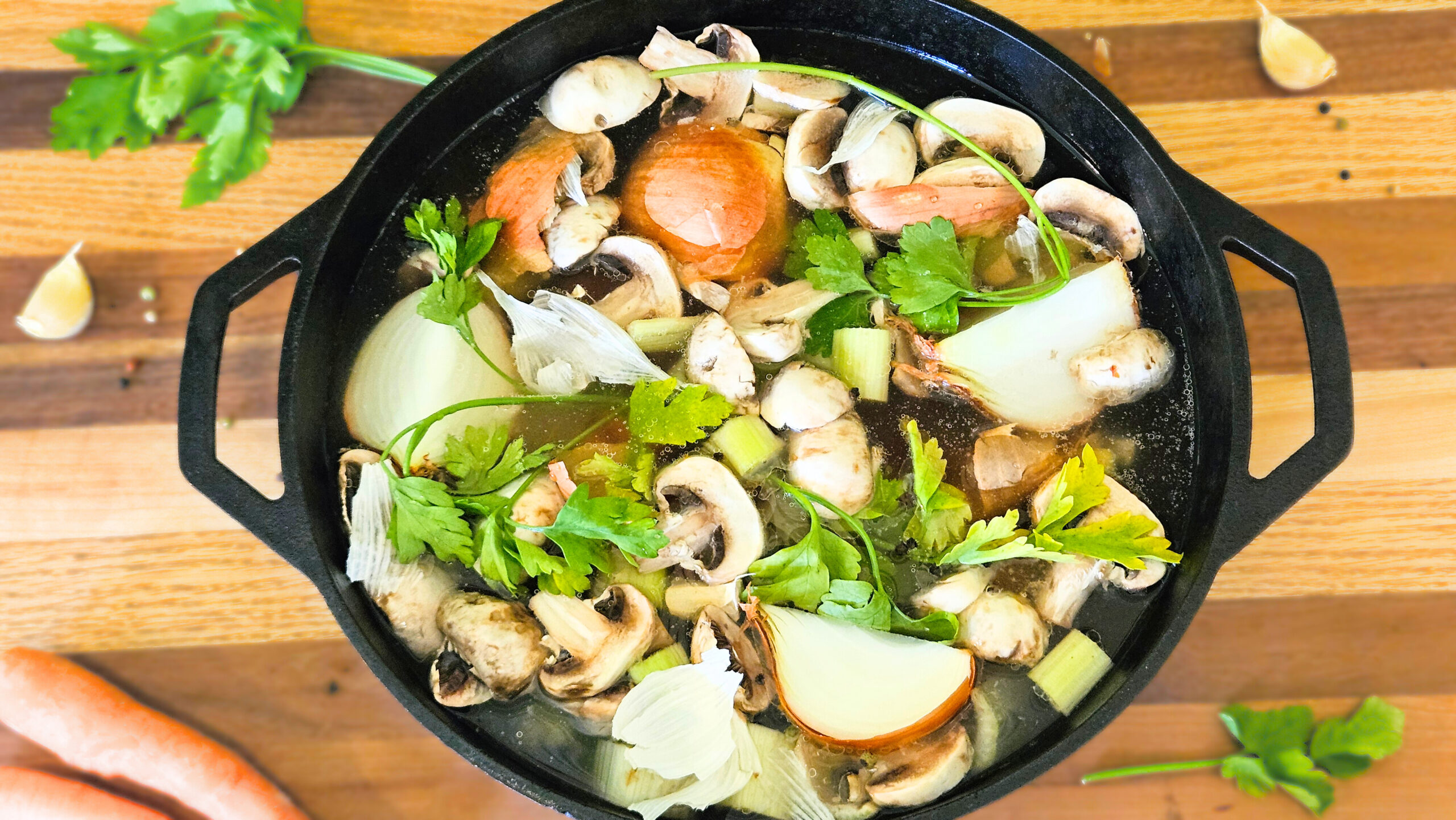
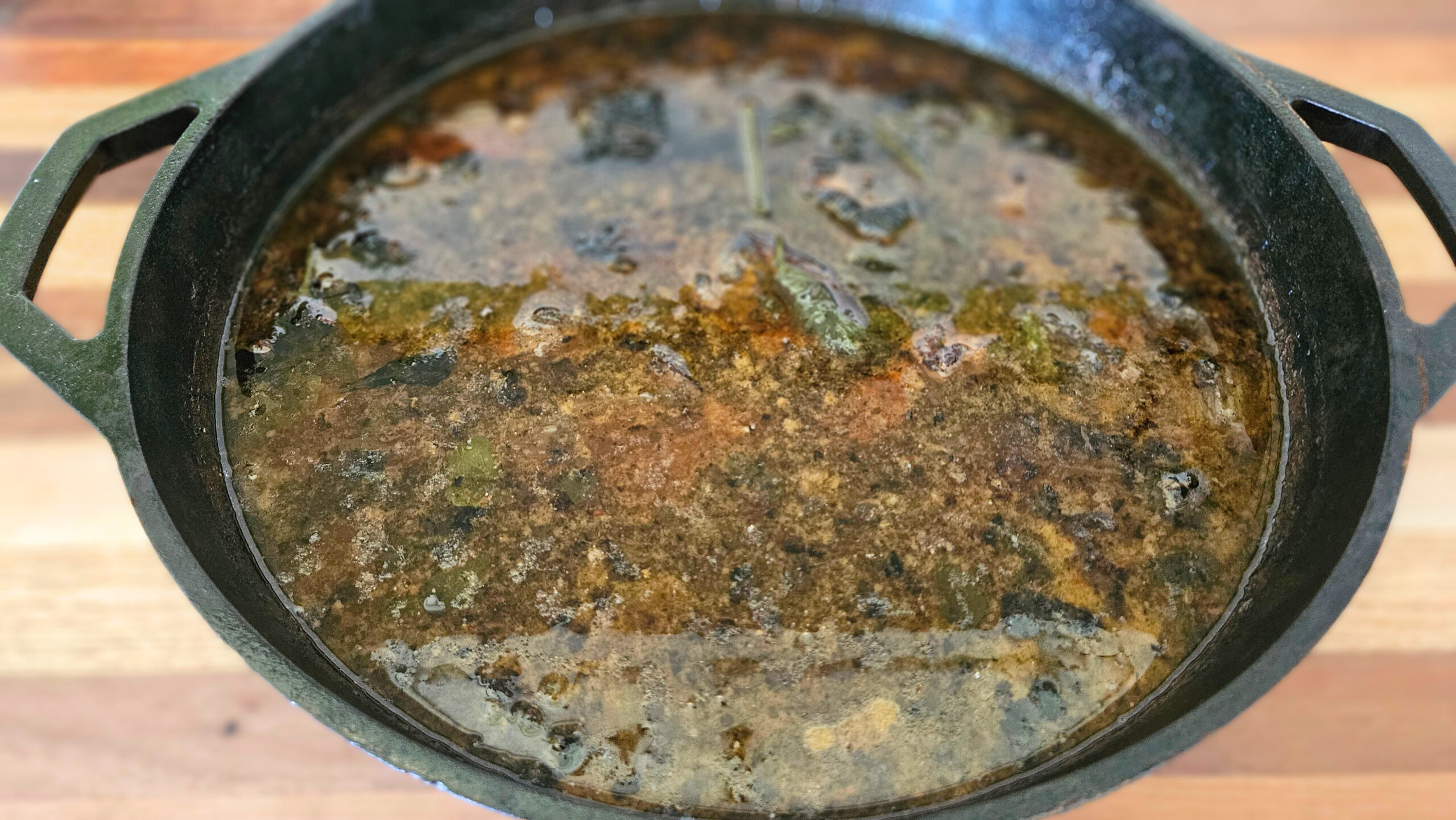
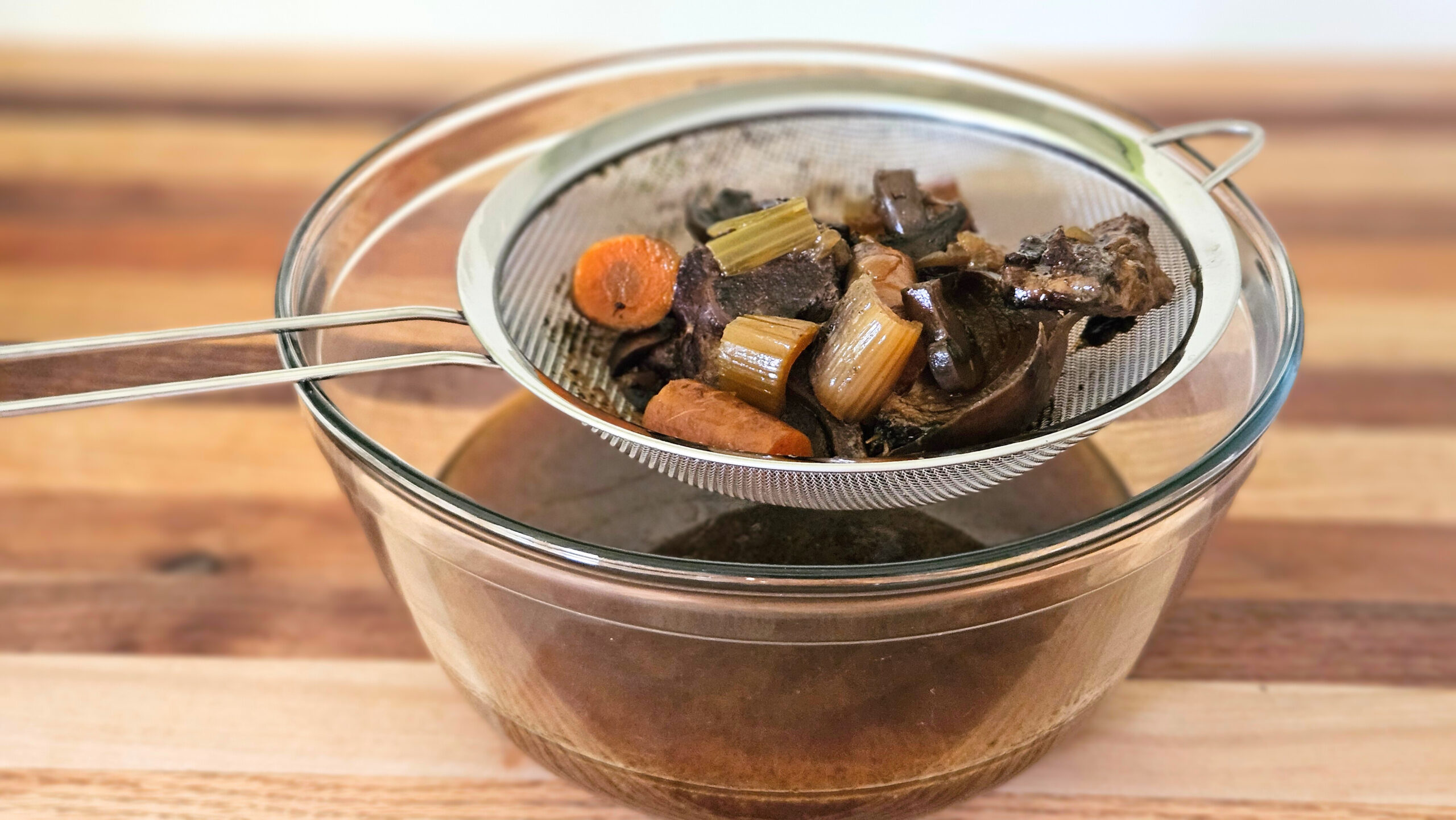
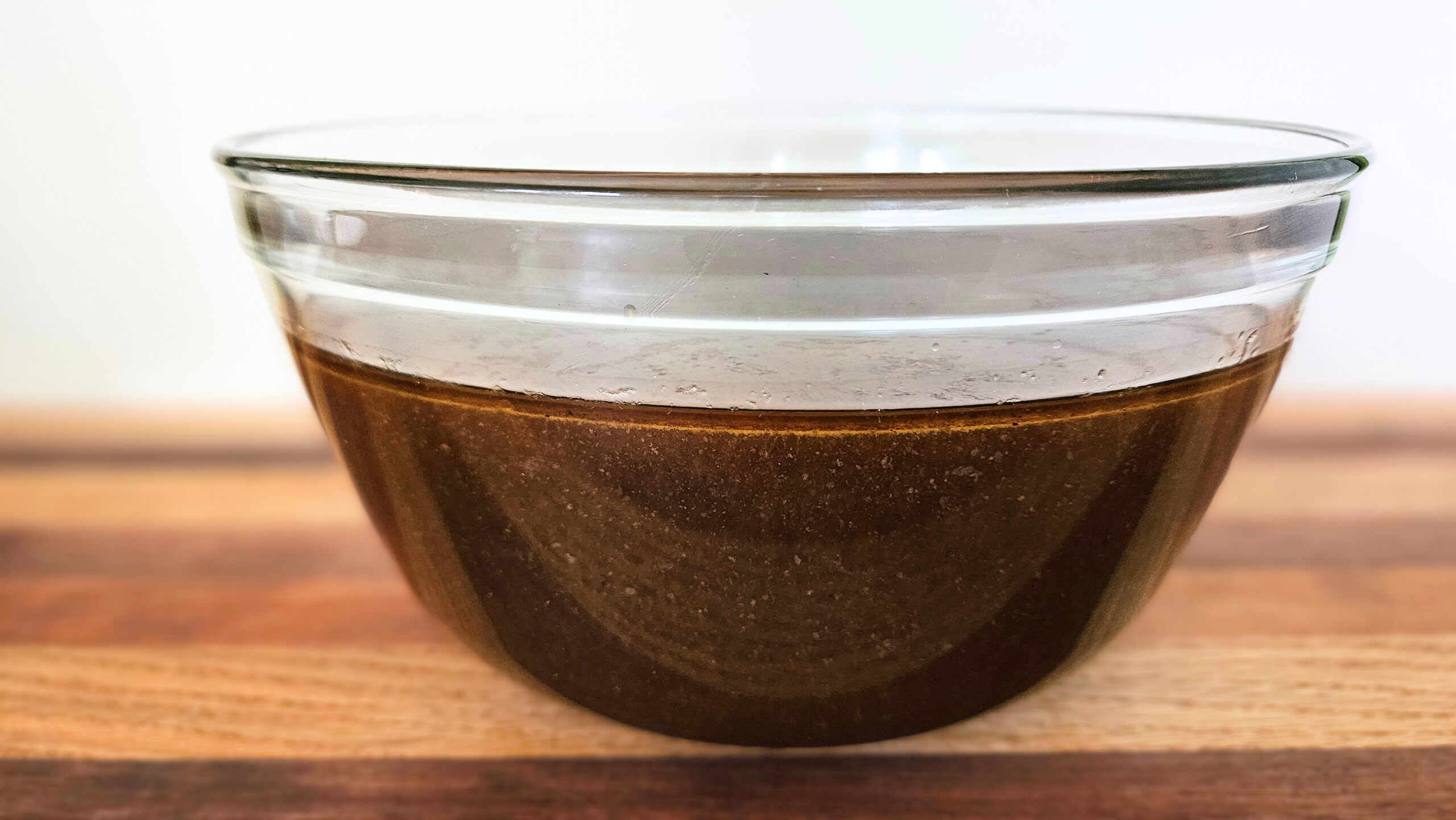
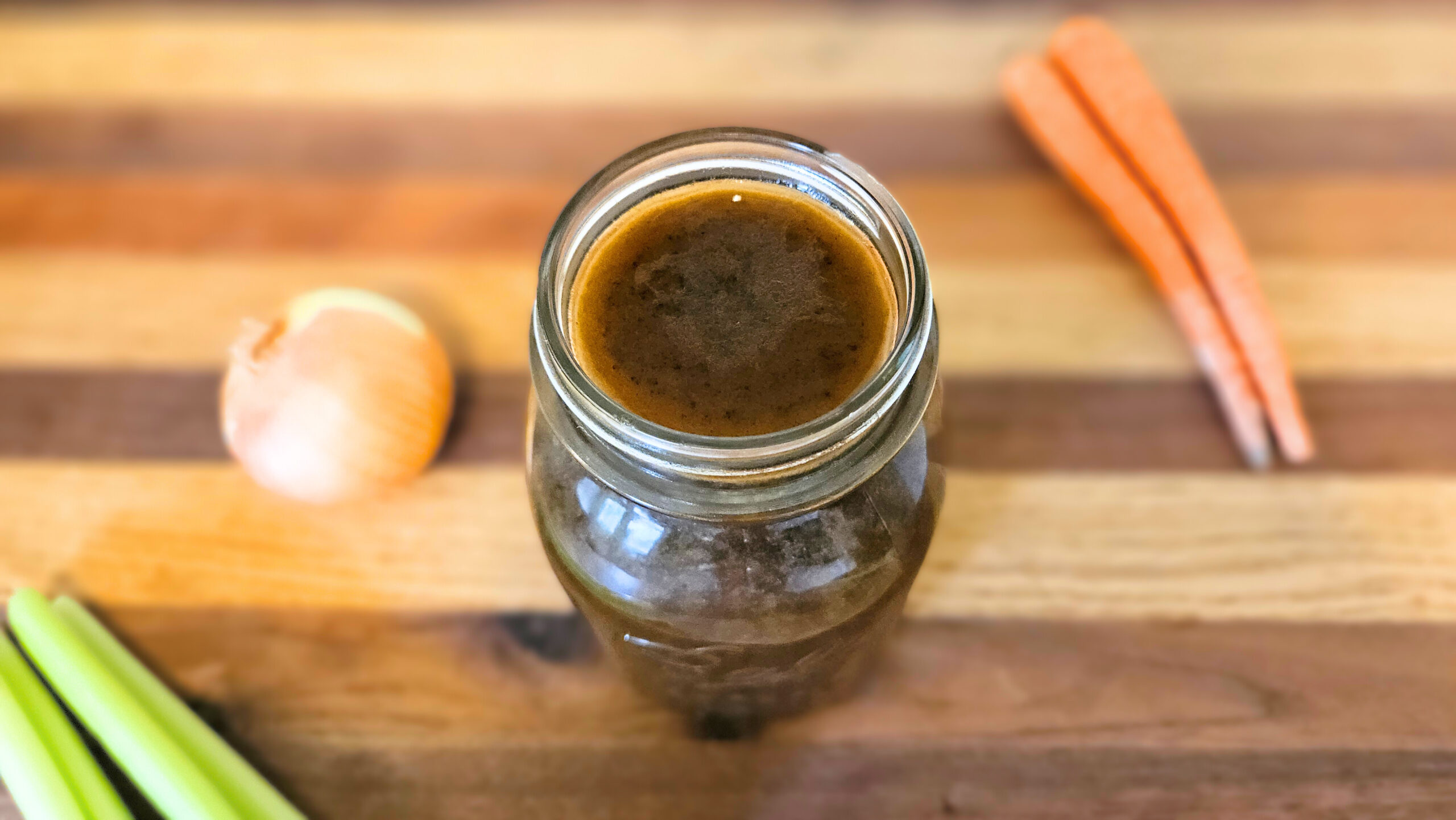
- Preheat your oven to 425°F.
- Bring a pot of water to boiling and submerge your beef bones in the boiling water for about 10-15 minutes.
- Remove the blanched beef bones from the pot and place them on a rimmed baking sheet. It is important that the baking sheet is actually rimmed. If it is not, the fat will drip from the sheet and onto the bottom of your oven. If you are using a cast iron dutch oven, you can alternatively roast your bones in the dutch oven. I usually do it this way to reduce the amount of equipment I use and to not lose any fat. (See Nourishing Fats by Sally Fallon)
- Once preheated, place your bones in the oven for about 15-20 minutes, or until they are a nice deep brown.
- Once the bones are roasted, combine all ingredients in your dutch oven or stockpot. Add the water last. Let the ingredients sit for at least 30 minutes. This is recommended in order for the apple cider vinegar to help draw out nutrients from the bones.
- Cover with a lid and turn the heat to high. Let the mixture come to a boil, and then reduce to low so that it is a slow simmer.
- Simmer for 48 hours. If you are uncomfortable having your stovetop on for 48 hours continuously, you can alternatively use a Crock-Pot. If you use a Crock-Pot, cook on low for 48 hours. You may have to adjust the amount of water you add, depending on the size of the Crock-Pot.
- After 48 hours, strain the broth through a fine mesh strainer. I like to place my fine mesh strainer above a large bowl and ladle the bone broth onto it.
- After straining, transfer the bone broth to mason jars.
- Refrigerate, freeze, or pressure can the bone broth. I have never pressure canned bone broth, so I usually put one or two jars in the refrigerator for immediate use and freeze the rest. When freezing, be sure to leave several inches of space above the liquid level in order to prevent the mason jar from cracking when the bone broth expands.
Tips
- As an alternative to using the exact vegetable amounts listed in the recipe, you can use vegetable scraps that you have saved, such as ends and peelings. You can have a Ziploc bag in your freezer that you continuously add scraps to.
- This recipe is very customizable. You can use every ingredient listed in the recipe, or you can pair it down to the basics of beef bones, water, apple cider vinegar, and seasonings. Totally up to you.
- To see how to make bone broth in an Instant Pot, please see Farmhouse on Boone.
- Although I have never pressure canned bone broth, I have heard that you are supposed to remove the fat layer from the top before canning. Therefore, you’ll have to let the bone broth cool down, allowing the fat to rise and settle at the top before you can scrape it off.
- This recipe does differ from my chicken bone broth recipe. To see how to make bone broth from chicken, please see here.
Ways to Enjoy
- Soups (French Onion Soup 😉)
- Stews (I LOVE beef strew)
- Sauces
- Gravies
- Soaking and cooking grains (rice, quinoa, etc.)
- Braising meat and/or vegetables
- Glaze for meat and/or vegetables
- Warm, comforting drink
Cost-Benefit Analysis
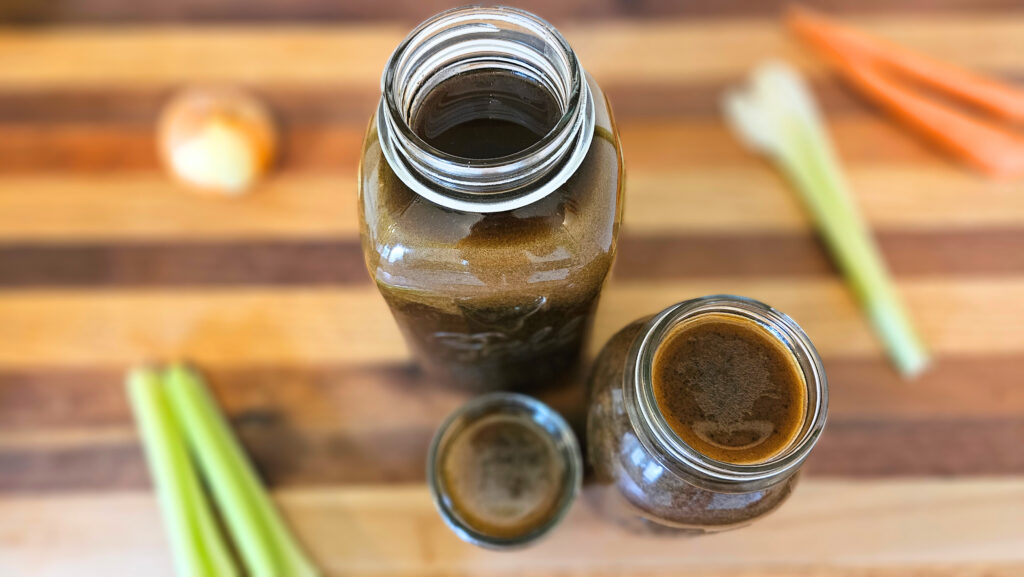
For this cost-benefit analysis, I will be comparing my homemade bone broth vs. Pacific Foods Organic Beef Bone Broth.
Due to already having these bones in stock at my home from butchering one of our own cows, I no longer have a receipt that could explain how much I paid for these bones. Therefore, I am going to improvise and calculate that portion of the recipe according to one of the beef bone online retailers that I have listed above.
As of October 2025 in Tennessee:
Homemade Beef Bone Broth
- 3-4lbs beef bones: $12.81 (3lbs of beef bones from Beaver Brook Ranch)
- 3 carrots: $0.70
- 5 celery stalks: $1.34
- 1 onion: $1.12
- 8oz sliced mushrooms: $2.99
- 2 whole cloves garlic $0.25
- ¼ C apple cider vinegar: $0.31
- 1 tbsp tomato paste: $0.33
- 1 tsp salt: $0.05
- 1 tsp peppercorns $0.49
- 2 bay leaves: $0.25
- 0.75oz parsley: $2.49
Total: $23.13
- Yield: 13 cups
- 13 cups = 104oz
- $0.22/oz
Store-Bought Organic Beef Bone Broth
Pacific Foods Organic Beef Bone Broth*: $6.49
- Quantity: 32oz
- $0.20/oz
In this instance, the store-bought version is actually cheaper. However, it is not cheaper by much. Based upon the price per ounce, the homemade recipe and the store-bought are very close. Therefore, financially, you can go either way.
I would argue the homemade is still a better quality, even though the store-bought version is organic. So, if you are going for highest quality and level of nutrition, I would stick to making it at home!
*Ingredients: Organic Beef Bone Stock, Reconstituted Organic Vegetable Juices (Water and Concentrated Juices of Onions, Carrots), Sea Salt, Organic Roasted Garlic Puree, Organic Yeast Extract, Organic Tomato Puree (Water, Organic Tomato Paste), Organic Garlic, Organic Celery Juice Concentrate, Organic Spices
FAQs
Related Posts
I hope you enjoy this nourishing beef bone broth that is both tasty and nutritious!
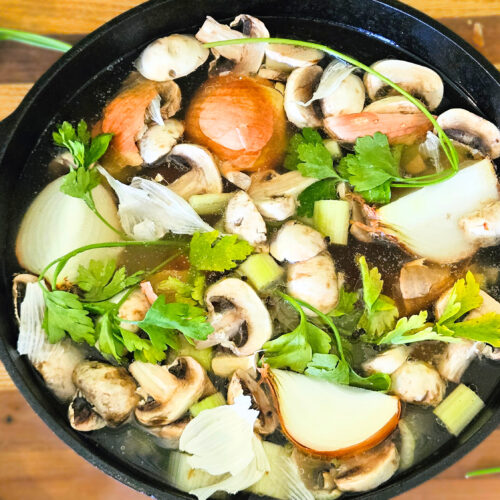
Beef Bone Broth
Equipment
- 1 Large cast iron dutch oven OR large stockpot
- 1 Rimmed baking sheet
- 1 fine mesh strainer
- 1 bowl
- quart size mason jars
Ingredients
- 3-4 lbs beef bones
- 3 carrots
- 5 celery stalks
- 1 onion
- 8 oz sliced mushrooms
- 2 whole garlic cloves
- 1/4 C apple cider vinegar
- 1 tbsp tomato paste
- 1 tsp salt
- 1 tsp peppercorns
- 2 bay leaves
- 0.75 oz fresh parsley
- onion and garlic skins (optional)
- 14 C filtered water
Instructions
Full recipe includes blanching and roasting the beef bones. See notes below for explanation.
- Preheat your oven to 425°F.
- Bring a pot of water to boiling and submerge your beef bones in the boiling water for about 10-15 minutes.
- Remove the blanched beef bones from the pot and place them on a rimmed baking sheet. If you are using a cast iron dutch oven, you can alternatively roast your bones in the dutch oven.
- Once preheated, place your bones in the oven for about 15-20 minutes, or until they are a nice deep brown.
- Once the bones are roasted, combine all ingredients in your dutch oven or stockpot. Add the water last. Let the ingredients sit for at least 30 minutes.
- Cover with a lid and turn the heat to high. Let the mixture come to a boil, and then reduce to low so that it is a slow simmer.
- Simmer for 48 hours. If you are uncomfortable having your stovetop on for 48 hours continuously, you can alternatively use a Crock-Pot. If you use a Crock-Pot, cook on low for 48 hours.
- After 48 hours, strain the broth through a fine mesh strainer. I like to place my fine mesh strainer above a large bowl and ladle the bone broth onto it.
- After straining, transfer the bone broth to mason jars.
- Refrigerate or freeze the bone broth. I usually put one or two jars in the refrigerator for immediate use and freeze the rest. When freezing, be sure to leave several inches of space above the liquid level in order to prevent the mason jar from cracking when the bone broth expands.
Notes
- Please click here for full explanation on blanching and roasting.
- As an alternative to using the exact vegetable amounts listed in the recipe, you can use vegetable scraps that you have saved, such as ends and peelings. You can have a Ziploc bag in your freezer that you continuously add scraps to.
- This recipe is very customizable. You can use every ingredient listed in the recipe, or you can pair it down to the basics of beef bones, water, apple cider vinegar, and seasonings. Totally up to you.
- To see how to make bone broth in an Instant Pot, please see Farmhouse on Boone.
- Although I have never pressure canned bone broth, I have heard that you are supposed to remove the fat layer from the top before canning. Therefore, you’ll have to let the bone broth cool down, allowing the fat to rise and settle at the top before you can scrape it off.
- This recipe does differ from my chicken bone broth recipe. To see how to make bone broth from chicken, please see here.
This is a personal blog. All posts, recipes, recommendations, and how-tos are for informational use and personal viewing pleasure only. Blog posts are not written by AI.




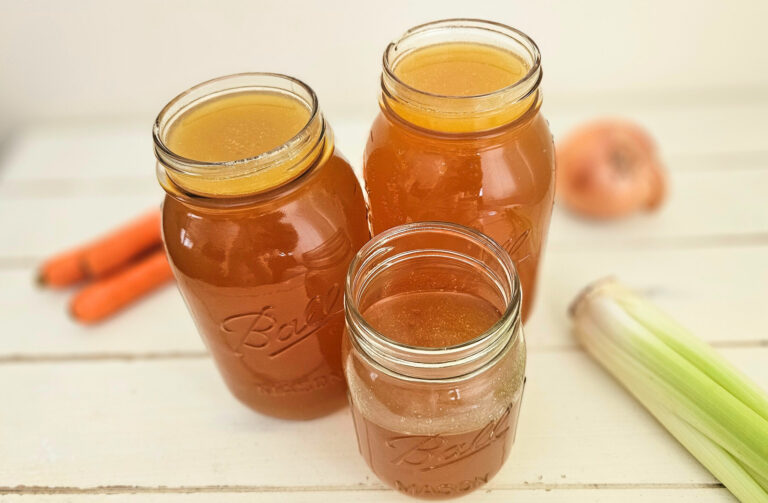
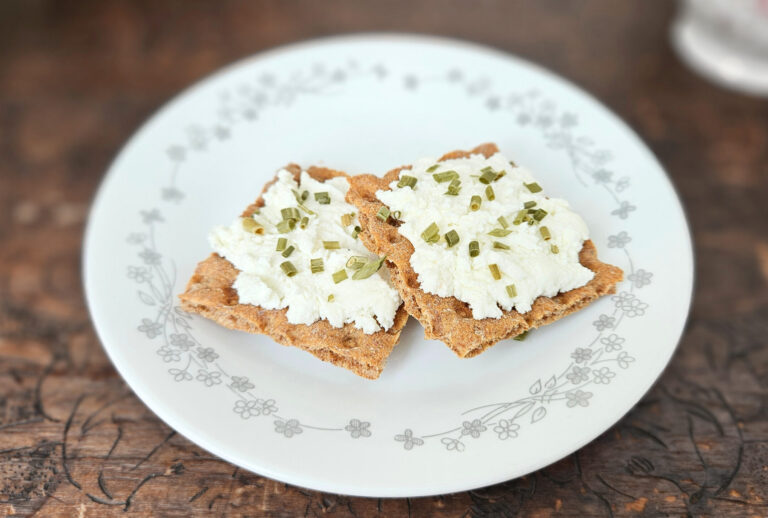
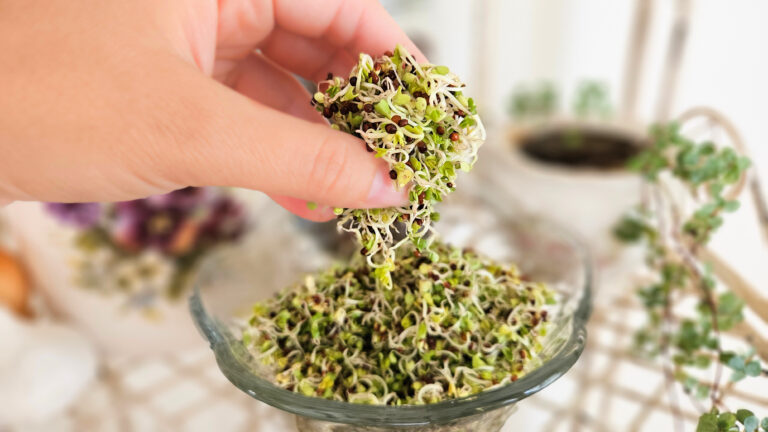
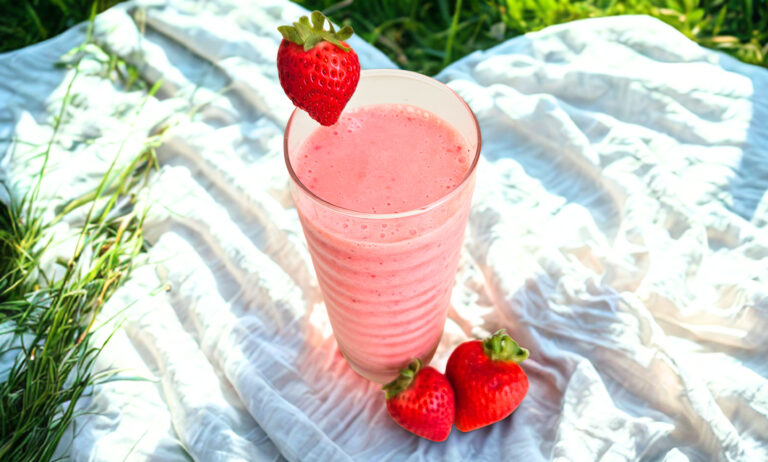
subscribe